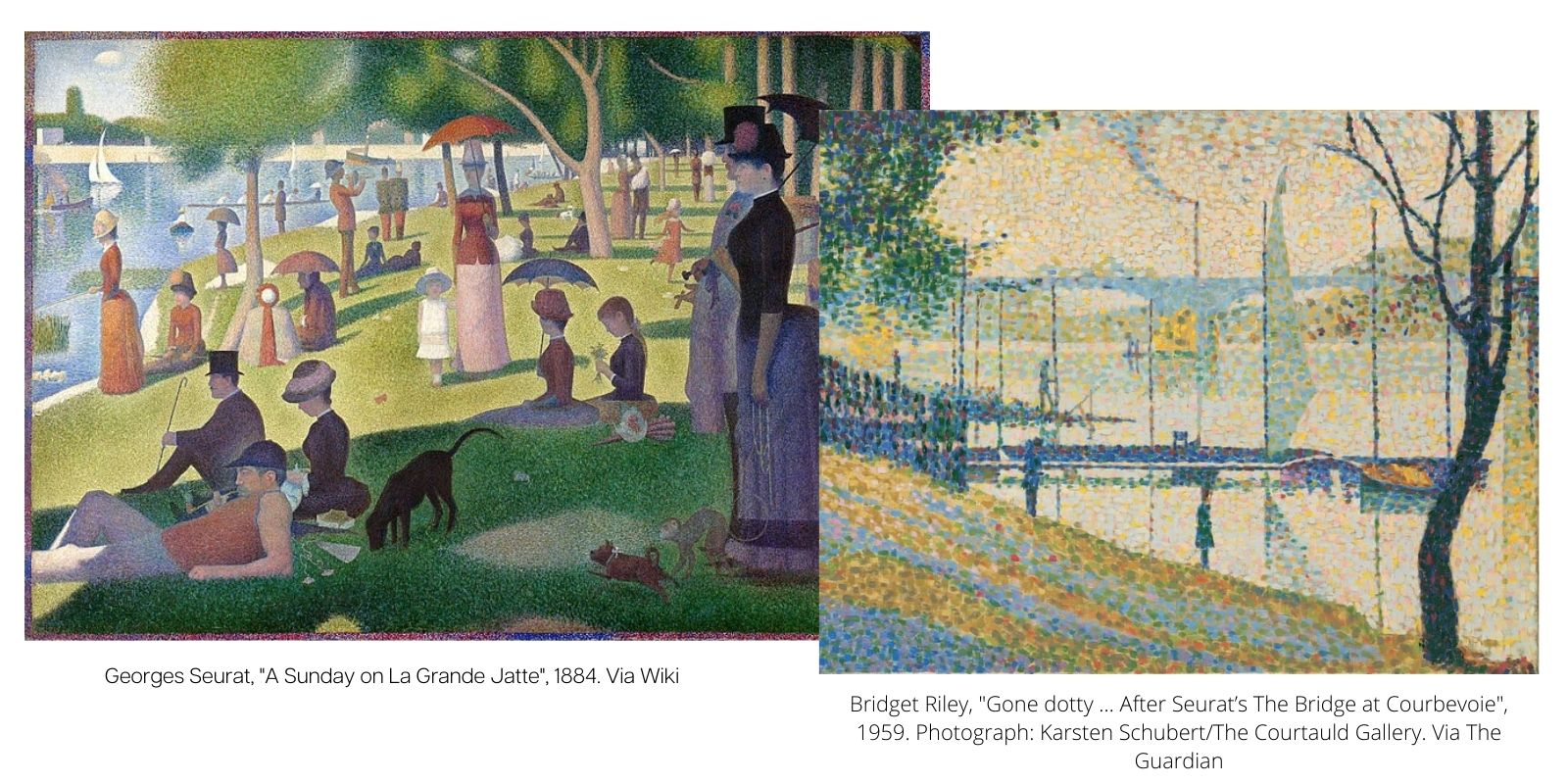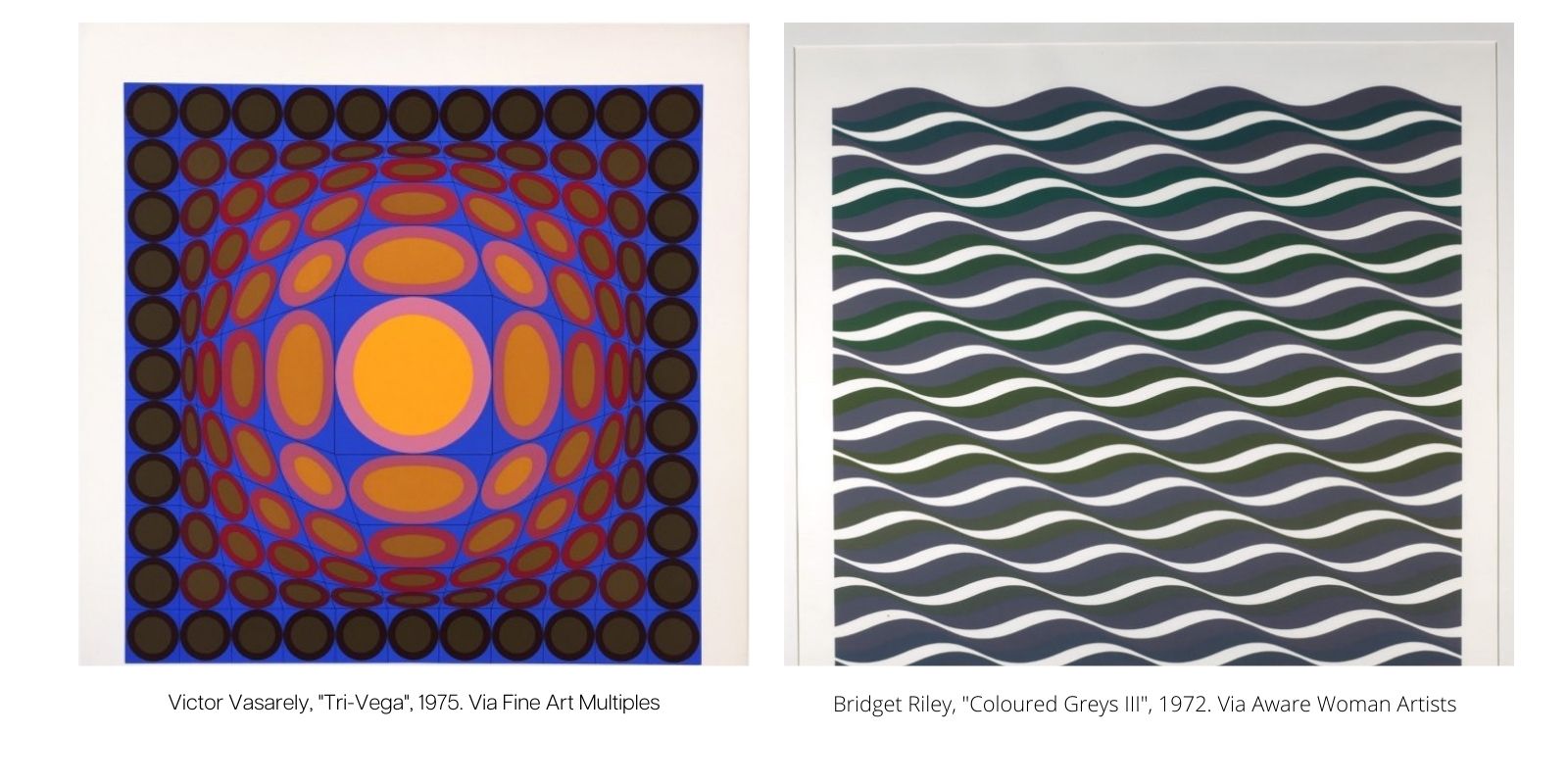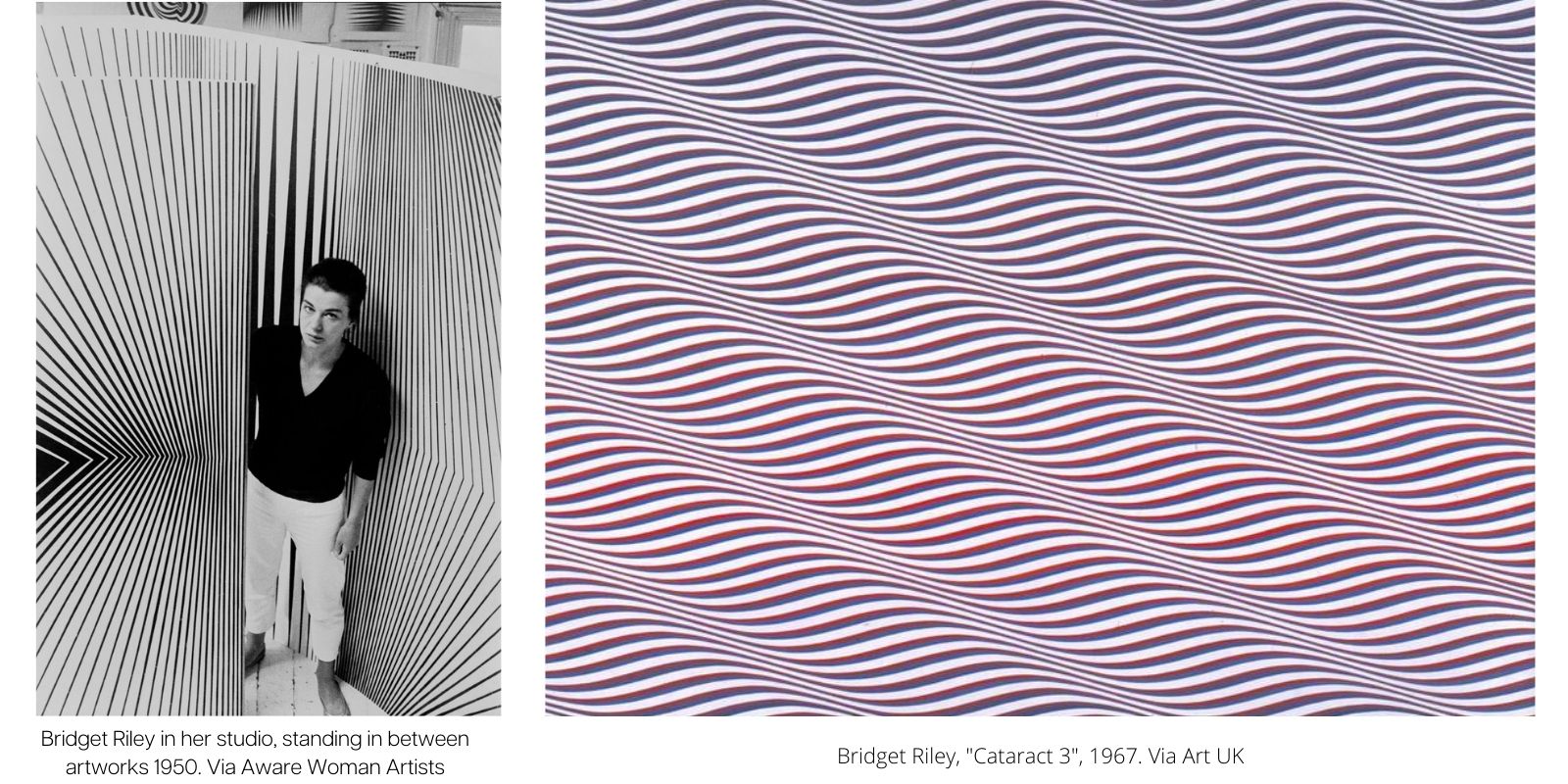
The pleasure of the unpleasant: Bridget Riley
First and foremost, we want to wish Bridget Riley a Happy Birthday! She is turning 90 years old this weekend, on the 24th of April. Despite the age, Riley is still producing paintings that leaves us in awe every single time! In case you haven’t come across Bridget Riley's work yet, this is your starting point. In this article, we will make you fall (or fall a little more) in love with this fascinating artist.

Bridget Riley is one of the most expensive British living artists of the decade. Her work is admired globally, and her practice primes for the lack of subject and the vast array of colours. Riley has been painting abstract art for over 60 years now and her work, unlike other abstract artists, focuses on precise form and composition along with in-depth colour studies.
We bet that if you show Riley's paintings to someone unfamiliar with the Op-Art movement, Abstractionism or Minimalism, they are likely to say, "is that art?" or "I could do that". These are common answers when an artist does not clearly demonstrate to be the master of the brush, a master of the technique or a master of the real. However, just because an artist is not trying to represent reality it does not mean that they are not masters of the painting technique. Bridget Riley is a far cry from being known as an artist that “lacks technique”. Quite the opposite! In fact, her perception of reality is far more in-depth than what can be easily perceived by a casual world observer.
Let's start by demystifying this "lacking technique" myth.

Looking at Bridget Riley's practice, it is hard to identify where her inspiration has come from. One might not think that she was ever interested in figurative painting, as abstract art always seems disconnected from narratives. But what if we told you that Bridget Riley’s biggest inspiration was, and always has been, Georges Seurat and the impressionist paintings? It is well known that Bridget Riley painted impressionist studies of landscapes and figures until 1960. She then immersed herself in Georges Seurat's work by studying in-depth pointillism, which led her to develop a unique style and practice. Georges Seurat was a French painter known for his large compositions with tiny dots of pure colour. Pointillism paintings adapted the same perception of the impressionist movement. Yet, instead of using expressive movements, pointillism was about controlled and contained movements on large-scale canvases. These tiny dots, when looked up close, were nothing else but colourful, abstract dots. However, observed from a distance, these dots would become a highly detailed figurative painting of breezy landscapes.
Bridget Riley became fascinated by this duality of perception. She found the importance of colour and scale to perception in Seurat's paintings that she then explored intensely through craft and experimentation. She knows how to master the brush; she knows how to master expression, and she does have a clear perception of what reality looks like.
We could stop here because we made our first point clear: Riley has the technique and is an artist with insight. But Riley's work has so much more to be said about it.

After her long years of studies around how Georges Seurat played with colour and the human eye, Bridget Riley started taking formative inspiration from Victor Vasarely’s work (a Hungarian-French artist who is considered the grandfather of the op-art movement). Although we can note a significant influence in Riley's work, Vasarely paintings were more complex in terms of composition as they constantly challenged the optical illusion of shapes. Indeed, this difference in composition is one of the key distinguishing factors between these two artists. Riley's impressionist influences were crucial in shaping her colour fascination; while Vasarely's work was mainly influenced by Bauhaus design principles.

By mixing her interest in both these artists - Georges Suerat and Victor Vasarely - Riley started exploring how colours would interact with each other through geometric compositions. With the precision of colour juxtaposition and the perfect blend of dynamic symmetries and asymmetries, Riley's paintings become an immense visual performance. Her meticulous colours and compositions, always on a large scale canvas, often leave the viewer in a confused state of mind. The composition tricks the eye, giving us the perception that the picture is moving which can cause motion sickness to some people. But do not take this potentially unpleasurable experience as a take-back! This should instead be the main reason why you end up loving her work.
Bridget Riley challenges our traditional way of looking at mundane colours and shapes. It makes us feel the tension between what our eyes perceive and what is in fact the real world. Riley really plays with our perceptions and illustrates how not everything is what it looks like: one colour at one point may seem blue, but in the next moment, it can be red or green. When you view Riley’s work, we recommend you to allow yourself to immerse yourself, let your perceptions wander and question the trueness of what is seen.
Happy Birthday, Bridget Riley! We look forward to seeing your exhibition at The Lightbox in Woking, UK, by the end of the year. Click here to see more information about this exhibition.
#stories #bridgetriley #opart #abstractart #georgesseurat #victorvasarely #geometricabstraction







